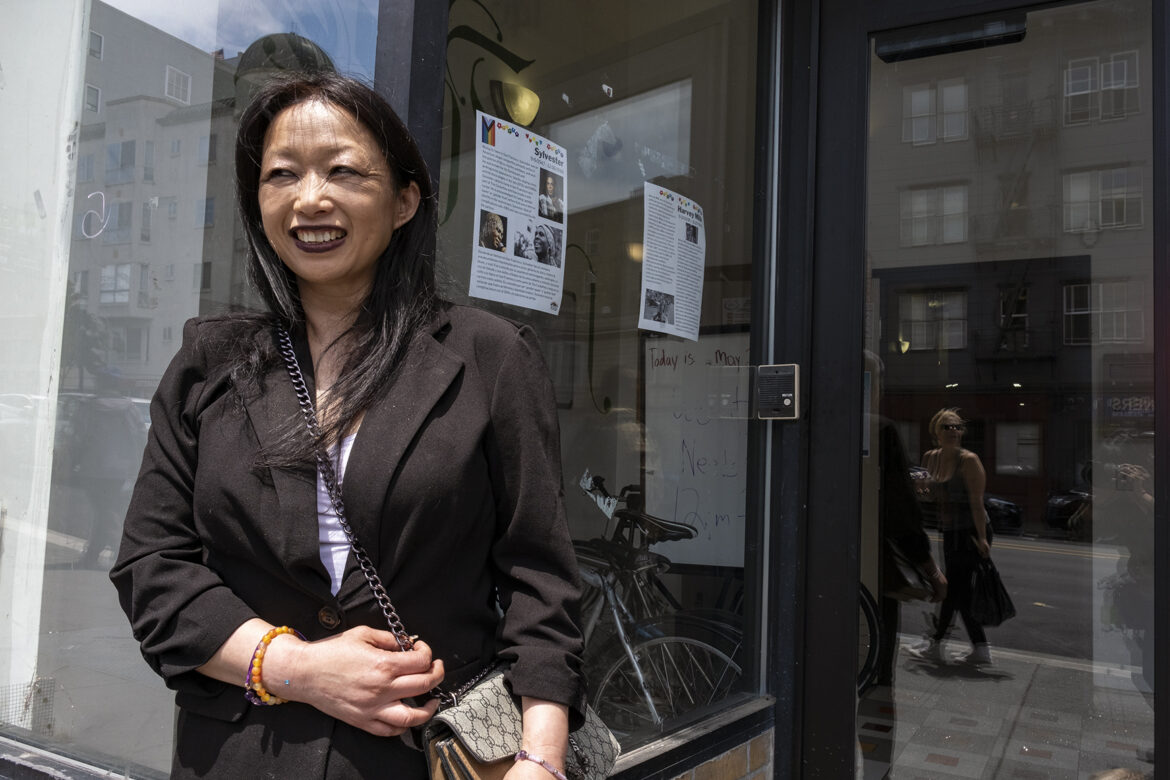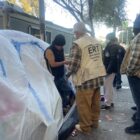This article is adapted from an episode of our podcast “Civic.” Click the audio player below to hear the full story.
Susan Lefever, who lived on the streets of the Tenderloin for 10 years before securing permanent supportive housing in 2019, said she feels lucky to be alive.
“I lost three friends in one month, really close ones from the fentanyl overdose,” she said. “I really believe that God was looking out for me when it came to that.”
A report released last week by San Francisco’s chief medical examiner shows that from January to July, 473 people died of accidental overdoses in the city — the vast majority of them linked to fentanyl. At this rate, the number of drug-related fatalities in 2023 could surpass every other year on record.
It took decades for overdose deaths and homelessness — which complicates the ability of drug users to access treatment options — to get to this level. Opioid addiction became rampant in the 1990s when the pharmaceutical industry began boosting sales of a new kind of painkiller, OxyContin, which is a long-lasting form of oxycodone. Doctors had previously prescribed opioids like morphine for only the severest cases of pain. But companies like Purdue Pharma said doctors should prescribe their opioids for any kind of pain without fear of their patients becoming addicted. But the new time-released form of oxycodone in fact had a much higher potential for addiction, abuse and misuse than other types of painkillers. By 2017, about 80% of heroin users in a study published by the National Institutes of Health reported that they began with prescription opioids.
That same year, fentanyl arrived in San Francisco, causing accidental overdose deaths to surge, especially among the unhoused population. The latest San Francisco chief medical examiner report showed that nearly a third of the people who died of overdose this year were listed as having no fixed address. Mental Health SF, a city agency that was recently formed to address the dual crisis of homelessness and addiction, reports that nearly 19,000 residents experienced homelessness at some point in 2022. Of these, nearly half suffered from addiction or a serious mental health disorder, and 3,000 people struggled with both.
As San Francisco continues to search for solutions, our team at “Civic” is exploring the origins of this ever-growing crisis, what has been done to help and what might be making things worse. After six months of research involving hundreds of studies, reports and archival news clippings, and three dozen interviews with people with lived experience and professional expertise in homelessness, addiction, medicine, criminal justice, housing, social work, street outreach, business, education, harm reduction, policymaking and advocacy, we’re launching the series, “San Francisco and the Overdose Crisis.”
Over six episodes, the series will explore what influenced rampant opioid addiction and its connection to homelessness, the 150-year history of policing and prosecuting drugs in San Francisco, the long battle to open a safe consumption site in the city, and grassroots efforts to stem the tide of drug-related fatalities.
In Episode 1, “The Origins of Rampant Opioid Addiction: San Francisco and the Overdose Crisis,” we take a historical look at the spread of opioid addiction and overdose deaths, the toll it has taken on San Francisco’s most vulnerable residents and the city’s response.
About the Series
As San Francisco continues to search for solutions for homelessness and overdose deaths, the Public Press’ “Civic” audio team is exploring the origins of these crises, what has been done to help and what might be making things worse.
Throughout our six-episode series, we are exploring what influenced rampant opioid addiction and its connection to homelessness, the 150-year history of policing and prosecuting drugs in San Francisco, the long battle to open a safe consumption site in the city and grassroots efforts to curb the tide of deaths.
PART 1: San Francisco’s Fatal Overdose Crisis Was Decades in the Making
PART 2: SF ‘Failing’ on Housing as Overdose Solution, Health Expert Says
PART 3: Drug Crackdown Has Sparked Violent Turf Warfare in Central San Francisco, Supervisor Says
PART 4: DA’s Opposition to Drug Diversion Programs Undermines Public Safety, Say Legal Advocates
PART 5: City Officials Lack Urgency to Prevent Overdose Deaths, Say Safe Consumption Proponents
PART 6: SF Students, SRO Residents Train to Reverse Drug Overdoses
This episode is part of a series on San Francisco’s overdose crisis and prevention efforts, underwritten by a California Health Equity Fellowship grant from the Annenberg Center for Health Journalism at the University of Southern California.










